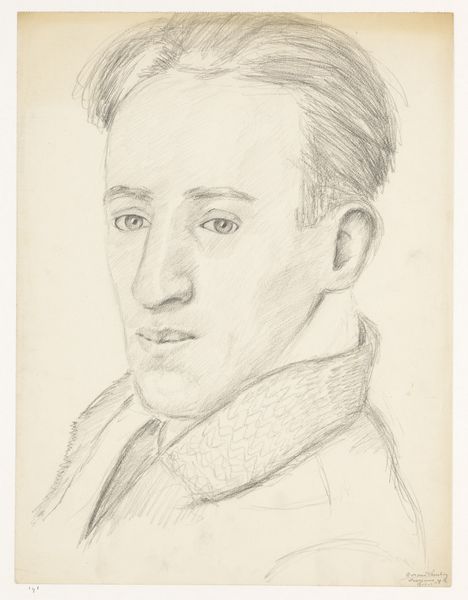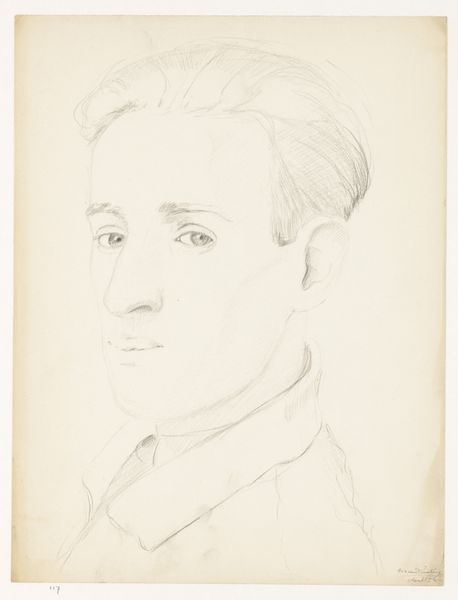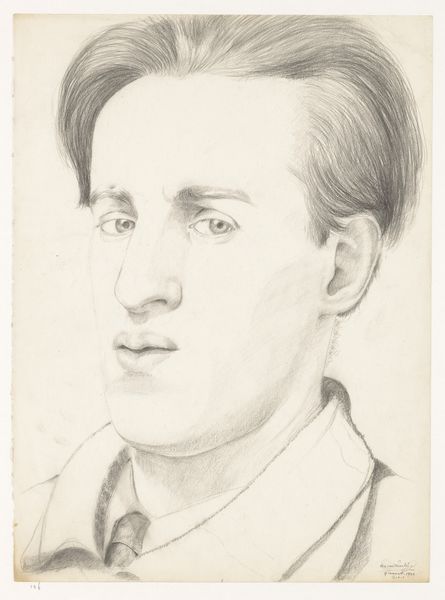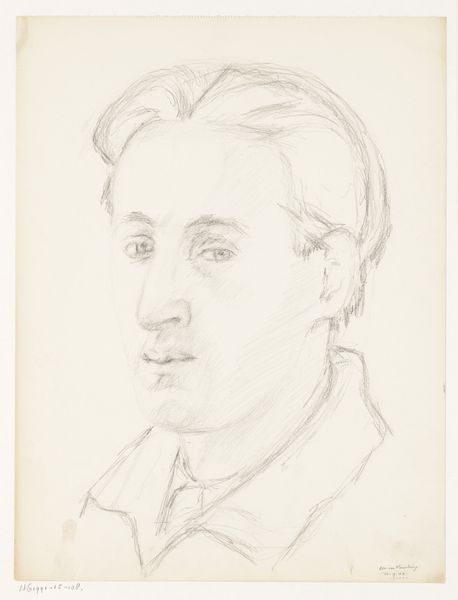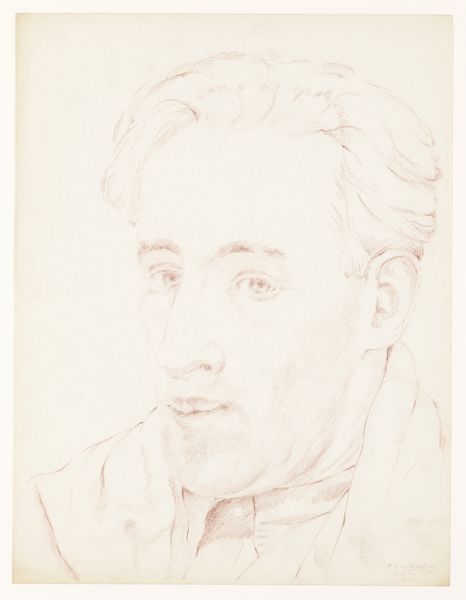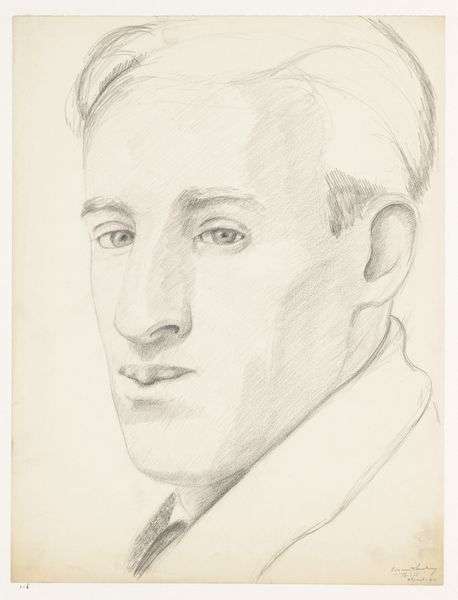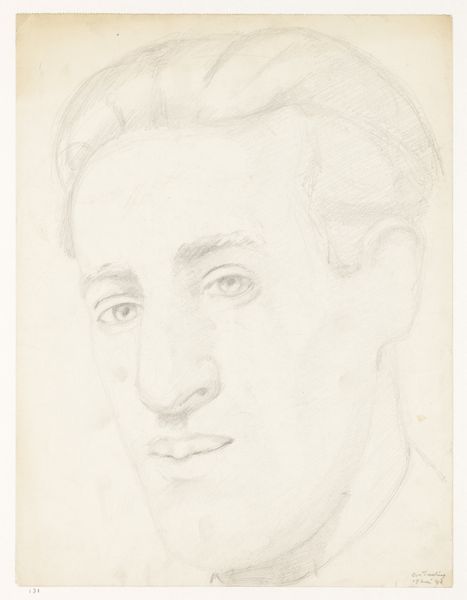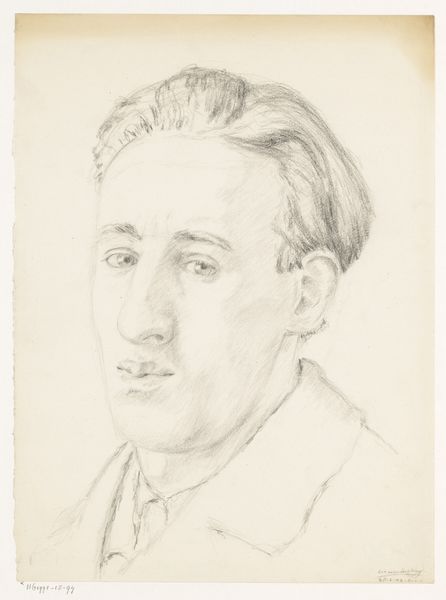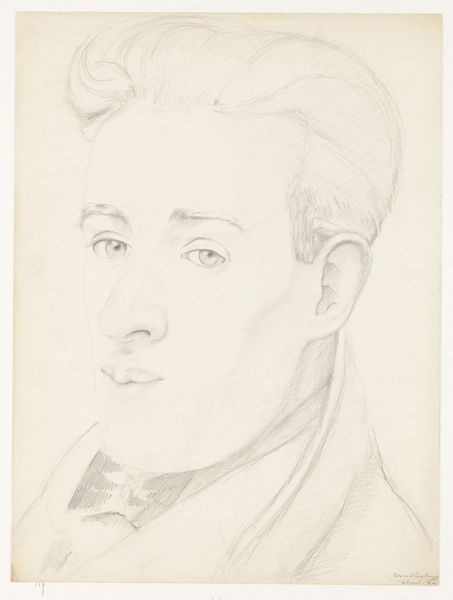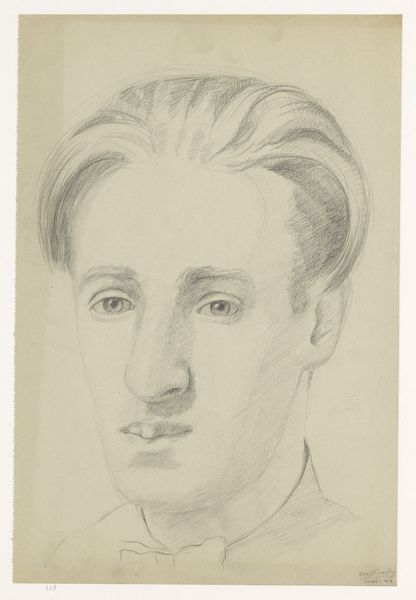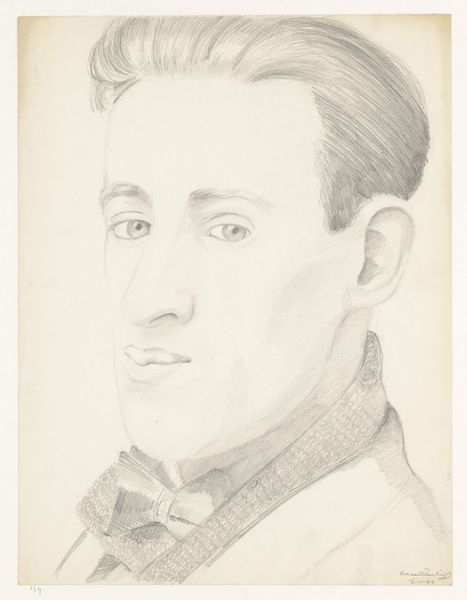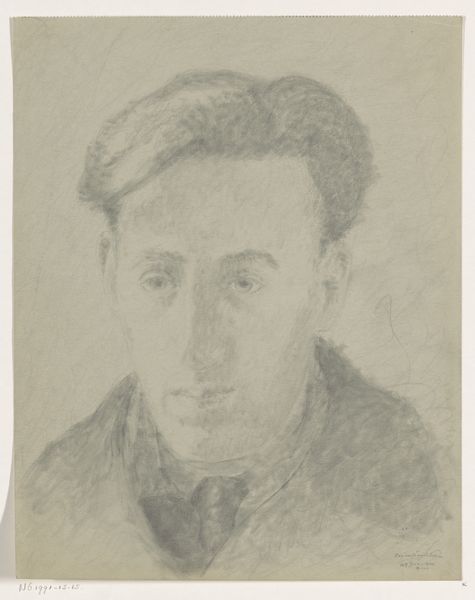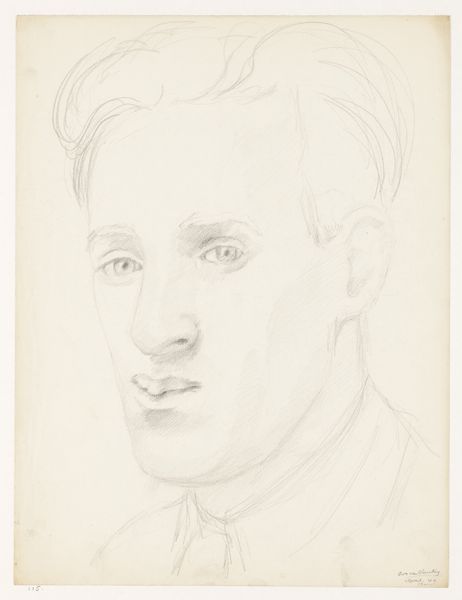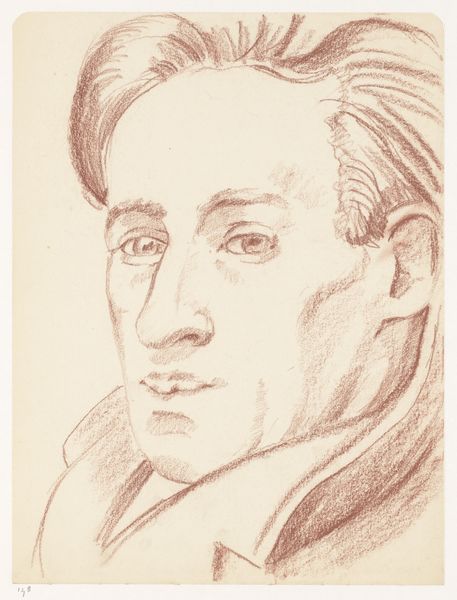
drawing, pencil
#
portrait
#
drawing
#
facial expression drawing
#
self-portrait
#
pencil sketch
#
caricature
#
portrait reference
#
pencil drawing
#
pencil
#
animal drawing portrait
#
portrait drawing
#
portrait art
#
fine art portrait
#
realism
#
digital portrait
Dimensions: height 35.0 cm, width 27.0 cm
Copyright: Rijks Museum: Open Domain
Curator: Here we have a look at Cor van Teeseling’s “Self-Portrait, Spring 1942,” a pencil drawing. Editor: It's surprisingly direct, almost confrontational in its simplicity. The lines are clear, and the shading creates a subtle depth that gives the face weight. Curator: Teeseling made this during a tumultuous period. The Netherlands was under Nazi occupation, and his work often subtly resisted the imposed culture. You can view a silent protest in every piece from this time, no matter how neutral. Editor: Do you see any indications of that turmoil in the rendering of the work itself? I’m struck by how skillfully he employs hatching and cross-hatching to model the form, especially the play of light and shadow around the cheekbones and jawline. The starkness of his gaze pierces the picture plane. It almost reads like a photographic portrait rendered in pencil, so precise and unembellished is its formal presentation. Curator: It's definitely about survival and bearing witness. Think of the conditions under which this was made, and of those for whom any act of creativity was an act of defiance. And of how the presentation of the self was itself under intense social and political pressures at this time. Editor: The gaze seems self-assured to me, almost stoic, a deliberate choice in representation that must also be read formally. It could signal resistance, but the rendering has all the characteristics of someone unflinching, strong. It’s almost dispassionate in affect. Curator: I'd argue that’s not coldness, but control, a face composed for the gaze of potential oppressors. Editor: I will consider that moving forward. His rendering decisions invite this kind of close attention, as it’s certainly effective in drawing the viewer’s eye. I think that’s what stands out for me most; the command of form, which serves to amplify, and give force, to the representation itself. Curator: Thank you; understanding art through the combination of political context and artistry deepens the experience.
Comments
No comments
Be the first to comment and join the conversation on the ultimate creative platform.
